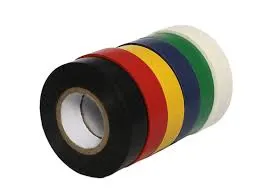The Versatility of Butyl Rubber Strips
Butyl rubber strips, renowned for their exceptional properties, have become indispensable in various industries ranging from automotive to construction. Butyl rubber, a synthetic polymer derived from isobutylene and isoprene, is celebrated for its impermeability to gases and moisture, making it an ideal choice for applications that require sealing and insulation.
One of the most significant advantages of butyl rubber strips is their outstanding resistance to weathering and aging. Unlike natural rubber, which can deteriorate quickly when exposed to UV rays and ozone, butyl rubber remains stable over time. This durability ensures that butyl rubber strips can maintain their performance in harsh environments, making them suitable for outdoor applications such as roofing and window sealing.
In the automotive sector, butyl rubber strips are widely used for manufacturing gaskets, seals, and sound dampening materials. These strips contribute significantly to vehicles' overall performance and comfort by reducing noise levels and providing effective sealing against water and air leaks. As a result, automotive manufacturers increasingly rely on butyl rubber to enhance vehicle longevity and efficiency.
butyl rubber strip

Another crucial application of butyl rubber strips is in the construction industry. Builders use these strips for weatherproofing and insulation in various structures, including buildings and bridges. Their ability to form tight seals helps prevent air and moisture penetration, which can lead to energy loss and structural damage over time. Furthermore, butyl rubber's resistance to chemicals makes it a preferred choice for industrial applications where contact with harsh substances is inevitable.
In addition to their practical applications, butyl rubber strips are also valued for their versatility in manufacturing. They can be easily cut, shaped, and molded to meet specific requirements, allowing for customization in various projects. This adaptability means that they can be used in everything from crafting DIY projects to large-scale industrial manufacturing.
Butyl rubber strips also play a role in the environmental sector, as they are often used in the production of containment liners for landfills and ponds. Their impermeability ensures that harmful substances do not leach into the ground, contributing to environmental protection efforts.
In conclusion, butyl rubber strips offer a unique blend of durability, versatility, and performance across numerous applications. As industries continue to evolve and seek sustainable solutions, the demand for quality materials like butyl rubber is likely to grow. Whether in automotive, construction, or environmental protection, butyl rubber strips will continue to play a vital role in enhancing functionality and efficiency across various sectors. Their indispensable nature and reliable performance make them a staple in modern manufacturing and construction.
-
XIANGFAN Rubber Tape-Ultimate Solutions for All Your Insulation NeedsNewsJun.24,2025
-
XIANGFAN Rubber Tape-Protection for Industrial and Residential ApplicationsNewsJun.24,2025
-
XIANGFAN Rubber Tape: Superior Safety and Sealing for Demanding EnvironmentsNewsJun.24,2025
-
XIANGFAN Rubber Tape: Reliable Solutions for Every Electrical ChallengeNewsJun.24,2025
-
XIANGFAN Electrical & Industrial Tape: Powering Reliability Across IndustriesNewsJun.24,2025
-
XIANGFAN Electrical & Industrial Tape: Excellence in Every ApplicationNewsJun.24,2025
